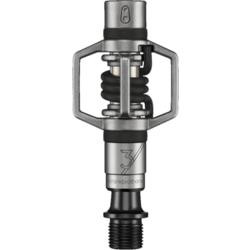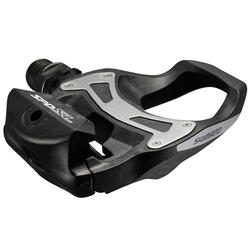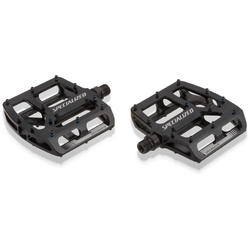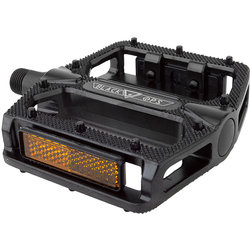All About Clipless Pedals 2016
Clipless pedals are among the most significant bicycle innovations ever. Borrowed from skiing technology, these trick pedals make you simultaneously more efficient by providing a better foot-to-pedal connection, and more safe by offering almost instant foot entry and release
To help you understand this important component, we've put together this buyers' guide (use the table of contents below to jump to the different sections).
What are Clipless Pedals?
Clipless pedals are actually a system comprised of special pedals and cleats, devices included with the pedals that attach to the soles of clipless cycling shoes. This means that you'll need to select pedals and shoes in order to upgrade to a clipless system.
Once you have the cleats bolted to your shoes and the clipless pedals on your bicycle (we're happy to help), you simply step on the pedals to click your feet securely in place (most systems make a "click" when you're locked in). When engaged, your feet are connected to the pedals for optimum efficiency. And your feet won't come off the pedals unless you want them to. To get out, you swing your feet heels first to the outside as if you're getting ready to put your feet down, and the pedals release.

Two Types
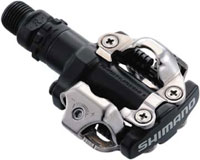 Just like there are two places to ride, on and off road, there are two types of clipless systems. The most popular are walkable clipless systems, on which the cleats are recessed into the shoe soles. This means the cleats don't contact the ground when you walk so this clipless system is ideal for walking and even hiking.
Just like there are two places to ride, on and off road, there are two types of clipless systems. The most popular are walkable clipless systems, on which the cleats are recessed into the shoe soles. This means the cleats don't contact the ground when you walk so this clipless system is ideal for walking and even hiking.
Many of them utilize a double-sided pedal (photo, right), which means you can click into the pedal on either side so you don't have to look down to get your feet in. This also means that if you ride your bike with regular street shoes, you'll have a decent pedaling surface even though you're not using your special cleated cycling shoes.
The other system is road (photo, below) and as the name implies it's designed for use on road bikes where maximum efficiency, aerodynamics and minimum weight are all important. Road shoes are lighter and stiffer than walkable models because the soles aren't lugged.
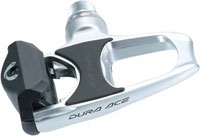 The other difference in road clipless systems is that the cleats protrude from the soles of the shoes because the soles are so thin and light. This makes it difficult to walk in the shoes (though there are cleat covers available to protect the cleat and improve traction).
The other difference in road clipless systems is that the cleats protrude from the soles of the shoes because the soles are so thin and light. This makes it difficult to walk in the shoes (though there are cleat covers available to protect the cleat and improve traction).
Also, road systems usually are single-sided so you must find the correct side of the pedal to click in when you start out. Most road pedals hang a certain way to make this relatively easy.
Features & Benefits
Getting Used To Riding Clipless
The most important thing is practicing before hitting the road or trail. This is especially important if you started with toe clips and straps, which require a different foot motion to get your feet out. Clipless pedals release by swinging your heels outward.
Teach your feet this motion while standing over the bike. You're just going to practice getting your feet in and out, not sit on the seat or ride anywhere. If you're worried about falling over, practice on a lawn or soft surface. Even better, if you have an indoor trainer, mount your bike on it and practice in place.
Click your right foot into the right pedal and remove it 30 or 40 times, and repeat with your left. It should begin to feel natural and easy. Keep clicking and releasing until you've really got it down.
When you're comfortable getting in and out of the pedals, do a short loop around the neighborhood and practice entering and exiting the pedals for real. The trickiest thing the first couple of times is remembering to swivel your heels to get out instead of pulling back (the toe-clip motion). As long as you keep the correct motion in mind you'll get your feet out just fine. If you're worried about it, plan your neighborhood test loop to end by a telephone pole you can hang onto for insurance.
If you're still having trouble getting in and out of the pedals, practice some more while standing next to the bike. There might also be something making it harder to get out of the pedals, such as a too-tight adjustment or a misaligned cleat. If that's the case, be sure to bring your bike and shoes in so we can have have a look, solve any problems and get you going.

